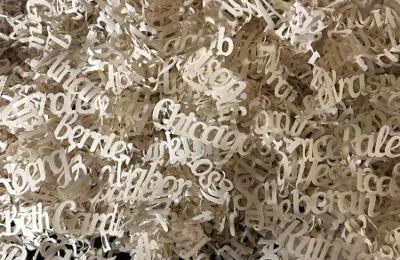In my last (and first) column, I focused on why to start your family history. Today we’ll look at how.
Of course, any tree starts from a seed, and we’ll germinate and plant that seed with easy steps, some of which are obvious.
A first important step is to create a pedigree — which aren’t just for dogs or royalty. Everyone has one. A pedigree is simply an easy way to see your direct ancestors: parents, grandparents, great-grandparents — anyone with “parent” in their relationship.
Most people know their four grandparents, but often can’t go much beyond that — don’t worry. We’ll be expanding that pedigree over time — just start with yourself, and go back as far as you’re able for both sides of your family. Don’t worry if you’re not sure of the name or spelling — they’ll change later as we do research.
Cousins, aunts, uncles are very important, but aren’t included in a pedigree — they can be listed on family group sheets or in software. We’ll go into more detail in another column, but just getting them on paper (or on your computer) is an important start.
If there are cousins or others whom you remember but don’t know how they’re related, write them down (and if known, whether maternal or paternal) and come back to them later.
The next step is talking with your relatives, and preferably the oldest ones first. One of the biggest regrets that family historians have is they didn’t start early enough and talk to those who had a wealth of family information and stories.
If you are relatively young, consider yourself lucky (and smart enough to start early!), and talk to your elders.
But even if you’re “of a certain age,” and have lost your parents and grandparents generations, you can start with yourself. Write down all you remember about those who are gone: birth, marriage and death dates and places are a foundation for later work.
Part of that process means finding any written documents you may have. We’ll talk more about organization in another column, but start gathering all paper (and digital) documents lying about, and putting them in one place.
Also, talk to your siblings and cousins, especially older ones — they often have some different memories than yours. Not to mention, they may be interested in what you find, and want to help.
Regardless of whom you talk to, when I say “talk,” I really mean you’re going to interview them. It’s best to have a list of questions written ahead of time. Cyndi’s List is an excellent online source for virtually any genealogical topic you can think of, including a section called, “Oral History & Interviews,” where you’ll find a variety of articles for what questions to ask.
While interviewing is critical, how you do it is important, too. Record it (with their permission, of course), so it can be preserved. Audio recordings are great, but video is best — it’s priceless for many generations to come to see and hear how their ancestors sounded and looked like.
Having a smartphone makes it far easier to video record interviews than it used to be. See the above referenced Cyndi’s List section for tips on how to interview.
I would have given anything to see interviews with my great-grandparents, but at least I videoed two of my grandparents and both parents before they passed.
Their expressions, voices, laughter, accents, frustrations, humor, joy, mannerisms, memories — all will survive for many generations.
You may find out in the course of interviews that other family members have started their own family tree or have done some research. That’s great! Ask if they’ll share what they have, and if they want to help you — it’s always good to have a genealogy buddy.
As you do interviews, verify your understanding of the family tree with them. Also, ask if they have any family documents or photos — if they do, see whether they’ll let you borrow them or be willing to let you digitize them, wither with a scanner or just taking a good photo of it with your phone.
With photos, make sure they help you identify everyone in the photo.
As you do all that, surely your ancestors will be smiling down on you as you bring them back to living memory and — perhaps for the first time — tell their story.
Copyright © by the Intermountain Jewish News












